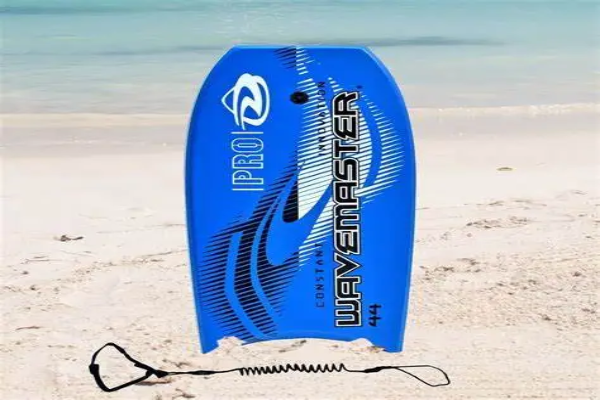Stand-up bodyboarding combines the excitement of traditional bodyboarding with the thrill of surfing. It requires balance, strength, and technique. This guide will take you through everything you need to know to master this exhilarating sport.
Understanding Stand-Up Bodyboarding
What is Stand-Up Bodyboarding?
Stand-up bodyboarding is a hybrid water sport. It blends elements of bodyboarding and surfing. Riders use a bodyboard, but instead of lying down, they stand up.
History and Evolution
Bodyboarding has roots in ancient Polynesia. Modern bodyboarding emerged in the 1970s. Stand-up bodyboarding evolved as riders sought more challenges.
Equipment Needed
- Bodyboard: Select a board suitable for your weight and height.
- Leash: Attach it to your ankle or wrist to prevent losing the board.
- Fins: Use for added propulsion and control.
- Wetsuit: Choose one based on water temperature for comfort.
Safety Considerations
- Know Your Limits: Don’t push yourself too hard too soon.
- Check the Weather: Ensure conditions are safe before heading out.
- Stay Hydrated: Drink water regularly.
- Understand Rip Currents: Learn how to escape them.
Choosing the Right Bodyboard
Size and Shape
- Length: Should reach from your knees to your chin.
- Width: Wider boards offer more stability.
- Tail Shape: Crescent tails are good for control; bat tails are better for speed.
Materials
- Core: PE (Polyethylene) cores are flexible; PP (Polypropylene) cores are stiffer.
- Deck: Soft decks provide comfort; harder decks offer more control.
- Slick: HDPE slicks are durable and fast; Surlyn slicks offer better performance.
Brand Recommendations
- Morey: Known for durability.
- BZ: Offers innovative designs.
- Pride: High-performance boards.
Building the Foundation: Fitness and Training
Physical Conditioning
- Cardio: Running, swimming, and cycling improve stamina.
- Strength Training: Focus on core, legs, and upper body.
- Flexibility: Stretching exercises to improve range of motion.
Balance Training
- Balance Board: Use for practice at home.
- Yoga: Enhances balance and flexibility.
- Slacklining: Improves stability and focus.
Mental Preparation
- Visualization: Picture yourself successfully standing up and riding waves.
- Breathing Techniques: Help control nerves and improve focus.
- Mindfulness: Stay present and calm in the water.
Basic Techniques
Paddling Out
- Entry: Enter the water with your board in hand.
- Positioning: Lie on the board with your body centered.
- Paddle: Use strong, alternating strokes.
Catching Waves
- Timing: Start paddling as the wave approaches.
- Speed: Match the speed of the wave.
- Pop-Up: Transition from lying down to a crouched position.
Standing Up
- Hand Placement: Place hands on the rails (sides) of the board.
- Foot Placement: Position feet shoulder-width apart.
- Balance: Keep knees bent and weight centered.
Advanced Techniques
Turning
- Carving: Lean into the turn with your back foot.
- Cutback: Turn back towards the breaking wave.
- Snap: A sharp, quick turn off the lip of the wave.
Aerials
- Speed: Gain speed to launch off the wave.
- Launch: Use the lip of the wave as a ramp.
- Landing: Aim to land back on the wave face smoothly.
Tube Riding
- Entry: Position yourself in the wave’s pocket.
- Control: Maintain speed and balance.
- Exit: Aim for a smooth exit as the wave closes.
See Also: How to Bodyboarding with Fins
Common Mistakes and How to Avoid Them
Poor Paddling Technique
- Solution: Practice efficient, strong strokes.
Incorrect Foot Placement
- Solution: Ensure feet are shoulder-width apart.
Losing Balance
- Solution: Keep knees bent and weight centered.
Not Watching the Wave
- Solution: Always keep an eye on the approaching wave.
Stand-Up Bodyboarding in Different Conditions
Small Waves
- Techniques: Focus on quick turns and maneuvers.
- Board Selection: Use a wider, shorter board.
Large Waves
- Techniques: Emphasize control and stability.
- Board Selection: Choose a longer, more buoyant board.
Choppy Water
- Techniques: Use more pronounced movements to maintain balance.
- Board Selection: A heavier board can help with stability.
Environmental Considerations
Respect Marine Life
- Awareness: Be mindful of local wildlife.
- Distance: Maintain a safe distance from animals.
Leave No Trace
- Trash: Always take your trash with you.
- Footprint: Avoid damaging coral reefs and other natural features.
Sustainable Practices
- Gear: Choose eco-friendly equipment when possible.
- Travel: Reduce your carbon footprint by carpooling or using public transport.
Community and Culture
Finding Local Groups
- Surf Clubs: Join local clubs for camaraderie and learning.
- Online Forums: Connect with other enthusiasts online.
Competitions
- Local Events: Participate in local competitions to test your skills.
- International Competitions: Aim for larger events as you improve.
Etiquette
- Respect: Show respect to other riders and the environment.
- Patience: Wait your turn for waves.
Progression and Setting Goals
Short-Term Goals
- Basic Maneuvers: Master paddling, catching waves, and standing up.
- Consistency: Aim for consistent performance in different conditions.
Long-Term Goals
- Advanced Techniques: Learn aerials, tube riding, and other advanced maneuvers.
- Competitions: Compete in regional and national events.
Tracking Progress
- Journal: Keep a journal of your sessions.
- Video: Record yourself to analyze and improve.
Conclusion
Stand-up bodyboarding is a thrilling and rewarding sport. With the right equipment, training, and mindset, you can master it. Remember to stay safe, respect the environment, and enjoy the ride.

